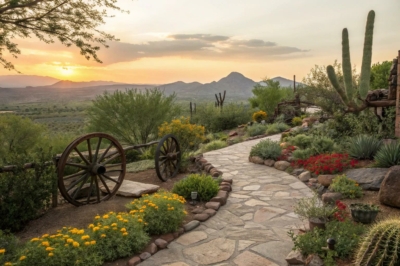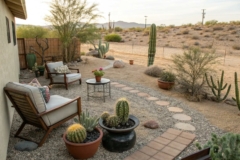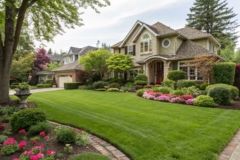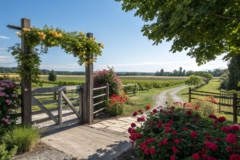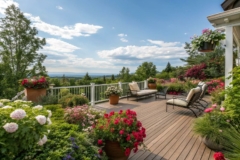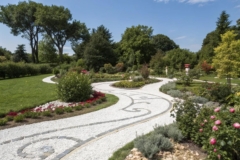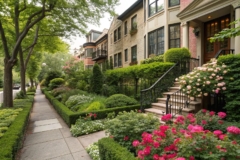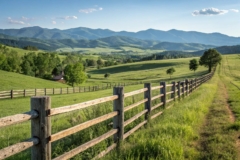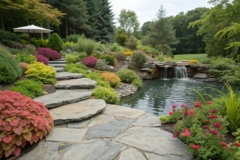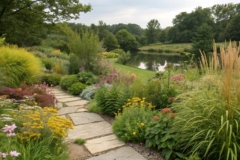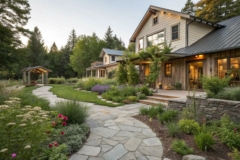1. Minimalist Desert Design

Adopt a minimalist desert design for a clean, uncluttered look. This style uses fewer plants but makes a big impact with bold textures.
You might give these a try:
- Decorative Gravel Stones: Enhance your landscape with decorative gravel for a clean, modern, and low-maintenance aesthetic.
- Desert Cacti Collection Set: Add striking silhouettes to your garden with a collection of varied desert cacti species.
- Artificial Succulent Planters: Create a hassle-free desert look using realistic artificial succulents with minimal upkeep.
2. Simulated Dry River Beds

Design a dry river bed using rocks and pebbles for a natural look. I love the way mine mimics a flowing stream even during dry spells.
Possibly helpful picks:
- Decorative River Pebbles: Enhance your garden’s beauty with smooth, decorative pebbles for a natural stream effect.
- Landscaping Boulders: Add structure and depth to your dry river bed with natural landscaping boulders.
- Desert Succulents for Landscaping: Incorporate low-maintenance succulents for a lush, sustainable addition to your dry river bed.
3. Cacti and Succulents for a Desert Vibe

Embrace the arid beauty of the desert with cacti and succulents. I’ve found that these hardy plants require minimal water and add striking silhouettes to any landscape.
Might be a good match:
- Cactus and Succulent Soil Mix: Enhance drainage and support growth with specialized soil for your arid garden plants.
- Terracotta Planters: Add rustic charm and proper airflow to your desert garden with sturdy terracotta planters.
- Drip Irrigation Kit: Efficiently water your cacti and succulents with a simple-to-install drip irrigation system.
4. Wagon Wheels as Garden Art

Adding wagon wheels to your garden can instantly evoke the spirit of the Old West. I once repurposed an old wagon wheel as a focal point in my backyard, and it became an eye-catching piece that guests love.
A few suggestions:
- Decorative Wooden Wagon Wheel: Transform your garden with a rustic decorative wooden wagon wheel, creating a charming focal point.
- Metal Wagon Wheel Garden Ornament: Enhance your garden’s western theme with a durable metal wagon wheel ornament for lasting beauty.
- Vintage Style Wagon Wheel Wall Decor: Add vintage charm to your space with a classic wagon wheel wall decor piece.
5. Artistic Metal Sculptures

Enhance your garden with artistic metal sculptures. I love how these pieces add a touch of modern art to a rustic setting.
Give these a look:
- Outdoor Metal Garden Obelisk: Transform your garden with this modern metal obelisk, offering elegance to your outdoor space.
- Rustic Metal Cactus Sculpture: Add a southwest charm with a rustic metal cactus, perfect for enhancing your garden aesthetics.
- Tall Metal Garden Tower Sculpture: Elevate your garden’s beauty with a stunning tall metal tower, adding a modern touch.
6. Repurposed Barrels and Troughs
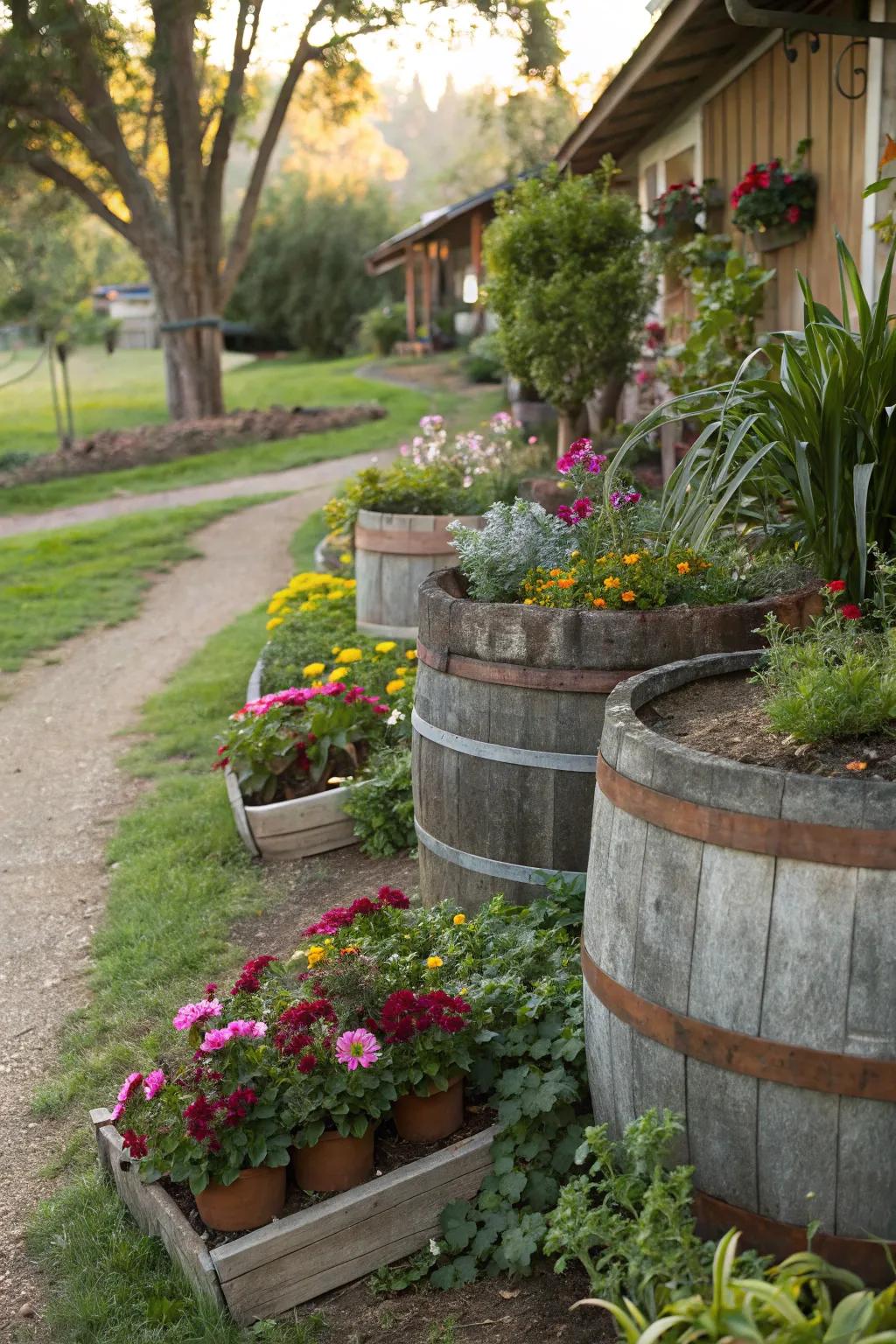
Use old barrels and troughs as unique planters. I repurposed a wine barrel into a succulent garden, and it’s become a charming highlight.
Some handy options:
- Decorative Wine Barrel Planter: Transform your garden with a rustic wine barrel planter—perfect for showcasing your favorite succulents.
- Galvanized Metal Trough Planter: Add industrial charm with a galvanized metal trough—ideal for vibrant floral displays.
- Wooden Barrel Planter Liners: Ensure longevity of your wooden planters with durable liners—protect and preserve effortlessly.
7. Native Grasses and Shrubs

Plant native grasses and shrubs to add texture and movement. These plants sway beautifully in the breeze, creating a dynamic landscape.
Items that may come in handy:
- Native Grass Seed Mix: Enhance your garden with native grasses that add natural texture and movement effortlessly.
- Pruning Shears for Shrubs: Keep your shrubs in perfect shape with these easy-to-use pruning shears.
- Adjustable Garden Watering Wand: Efficiently water your grasses and shrubs with this adjustable garden watering wand.
8. Natural Stone Walls
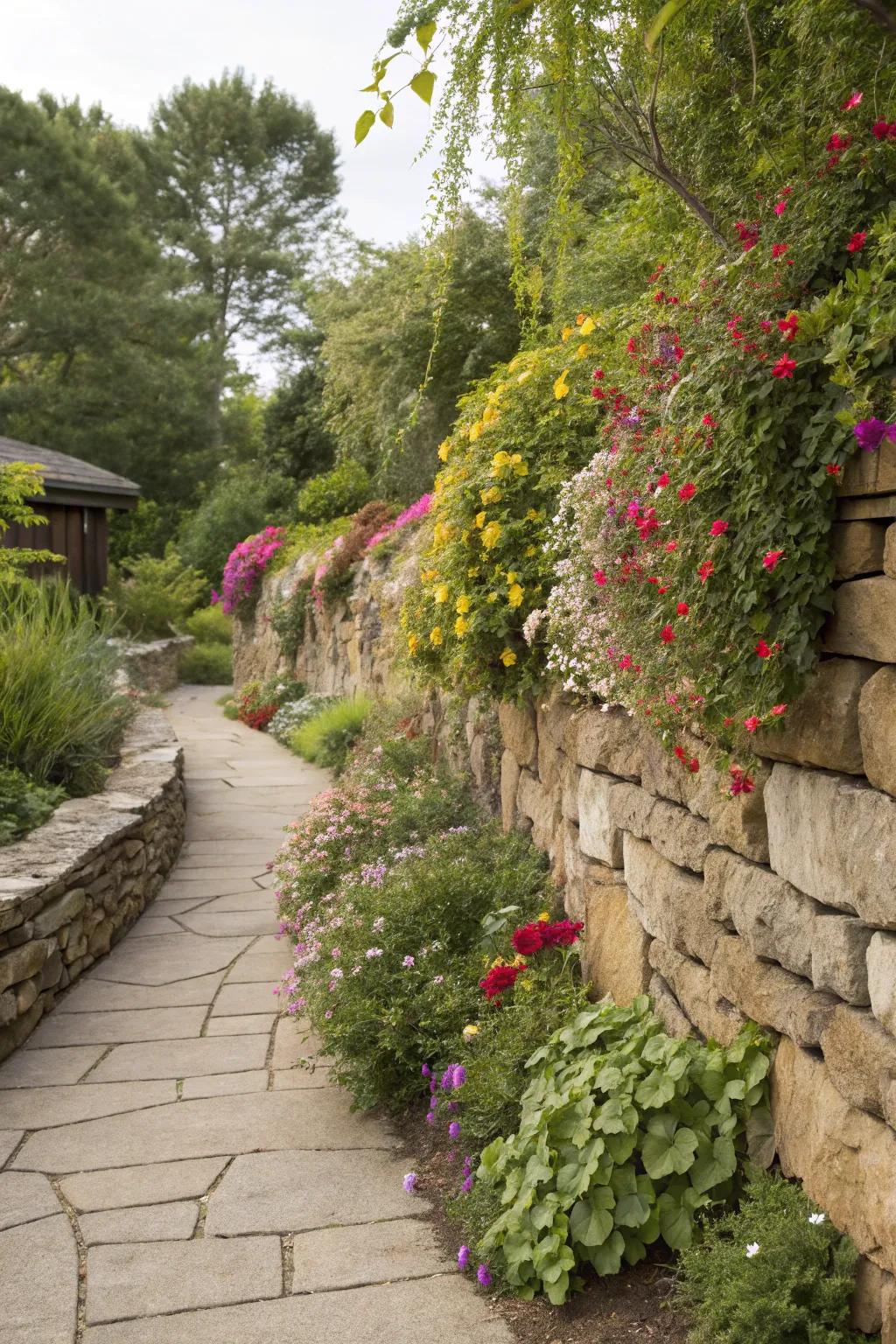
Build natural stone walls for structure and beauty. These walls can help define spaces and add an earthy element to your garden.
Useful items to consider:
- Garden Stone Edging Kit: Define pathways and borders in your garden effortlessly with this natural-looking stone edging kit.
- Stone Wall Building Adhesive: Securely bond stones in your wall for lasting durability with this easy-to-use building adhesive.
- Decorative Landscaping Rocks: Enhance your garden’s aesthetics with these versatile decorative landscaping rocks, perfect for any style.
9. Drought-Tolerant Plants for Easy Maintenance
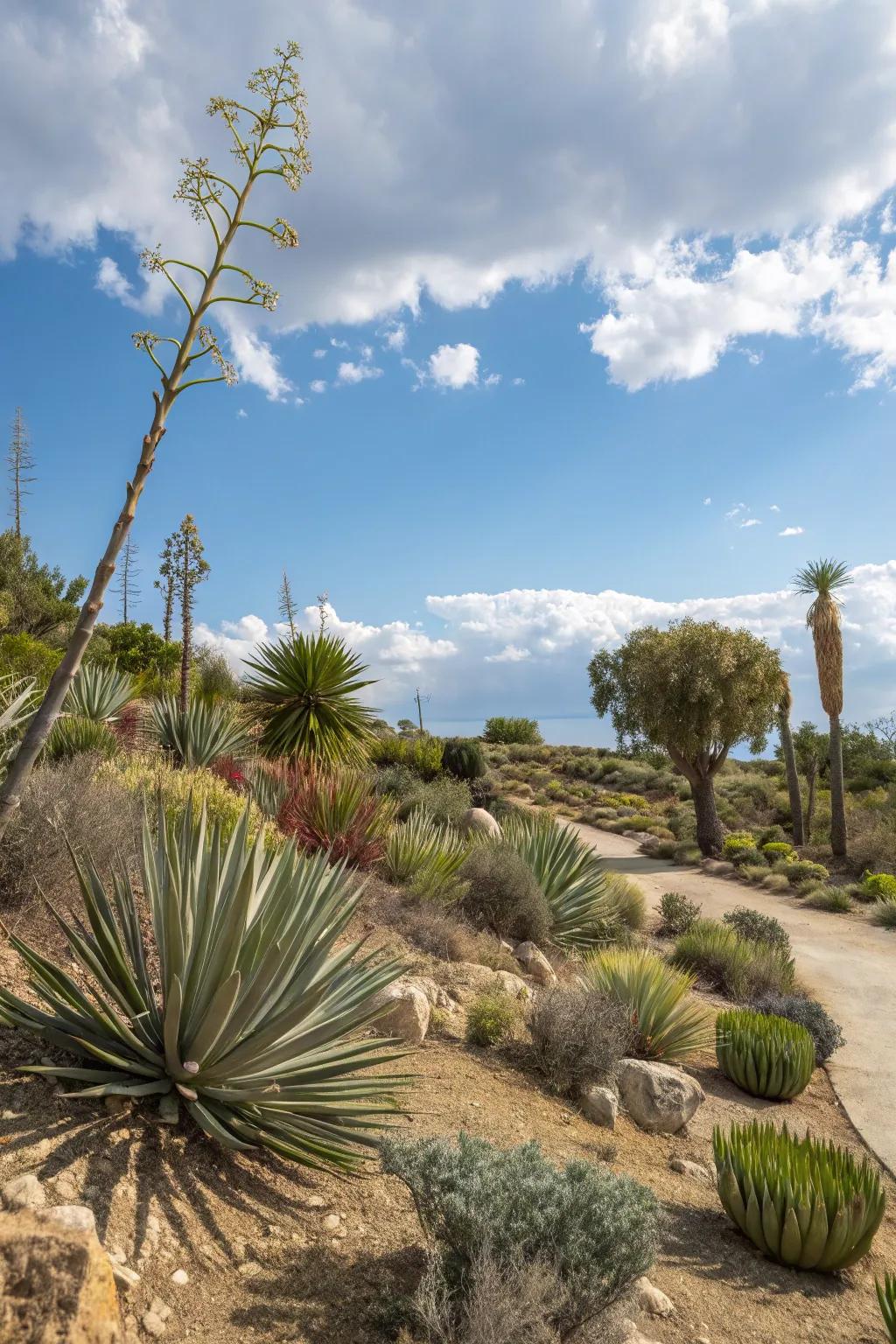
Opt for drought-tolerant plants to keep your garden lush without the fuss. In my garden, these resilient beauties thrive even during Austin’s hottest months.
Check if these fit your needs:
- Succulent Plant Variety Pack: Enhance your garden’s resilience with a succulent pack, ideal for drought conditions.
- Cactus Soil Mix: Ensure proper drainage with specialized cactus soil mix for healthier drought-tolerant plants.
- Garden Drip Irrigation Kit: Simplify watering by installing an efficient drip irrigation system for your drought-tolerant garden.
10. Accent Lighting for Atmosphere

Install accent lighting to highlight key features. I use solar lights to set a magical mood in my garden after dark.
Try these:
- Solar Pathway Lights: Illuminate your garden path effortlessly with eco-friendly solar lights for a magical evening ambiance.
- LED Landscape Spotlights: Highlight your garden’s best features with energy-efficient LED spotlights for stunning night views.
- Decorative Lantern Lights: Add charm to your garden walkway with stylish decorative lanterns that enhance evening aesthetics.
11. Cowboy Decor for Authenticity
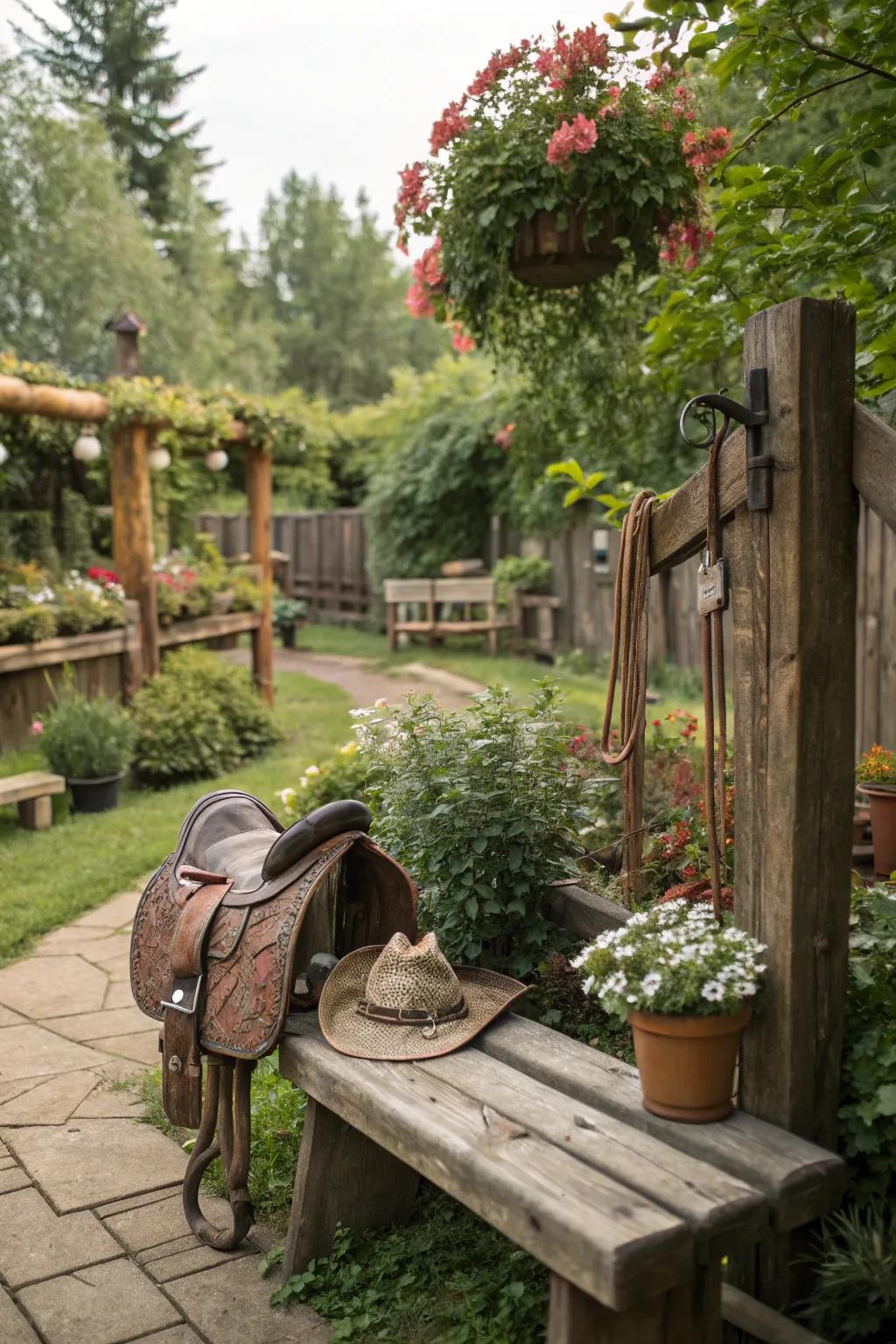
Infuse your garden with cowboy decor like saddles and horse figures for that true western feel. My patio’s vintage saddle display always sparks a conversation.
May just do the trick:
- Vintage Western Saddle Decor: Enhance your garden’s charm with a vintage saddle, a true centerpiece for conversation starters.
- Decorative Horse Figurines: Add rustic elegance with horse figurines, perfectly embodying the spirit of the Wild West.
- Cowboy Hat Planters: Introduce playful style with cowboy hat planters, ideal for a quirky western garden vibe.
12. Outdoor Seating with a View

Create a cozy spot with outdoor seating to enjoy the scenery. My patio is the perfect place to unwind with a view of the sunset.
Check these products out:
- Wooden Patio Sofa Set: Elevate your outdoor relaxation with a comfortable wooden patio sofa set for sunset views.
- Cushion Covers for Outdoor Furniture: Update your outdoor decor with stylish cushion covers, adding comfort and elegance to your seating.
- Outdoor Patio Table Décor: Enhance your patio setting with elegant tabletop décor perfect for entertaining or a quiet retreat.
13. Gravel and Stone Pathways

Create gravel and stone pathways to guide guests through your garden. I love how these paths add texture while highlighting my plantings.
Consider these options:
- Decorative Garden Gravel: Enhance your pathways with decorative gravel for a polished and inviting garden experience.
- Landscape Edging Stones: Define garden paths with edging stones for a neat, professional appearance.
- Pathway Lighting Fixtures: Illuminate your gravel pathways with stylish lighting fixtures for evening garden enjoyment.
14. Water Features for a Soothing Effect

Introduce a water feature for tranquility. My small fountain adds a soothing sound and attracts local wildlife.
A few helpful options:
- Tiered Outdoor Garden Fountain: Transform your garden with soothing water sounds and timeless elegance. Add tranquility instantly.
- Solar-Powered Water Fountain Kit: Eco-friendly and easy to setup, this solar fountain enhances your garden with natural grace.
- Rock Waterfall Garden Feature: Bring the serene ambiance of a natural waterfall to your garden with this stunning feature.
15. Wooden Fences and Arches
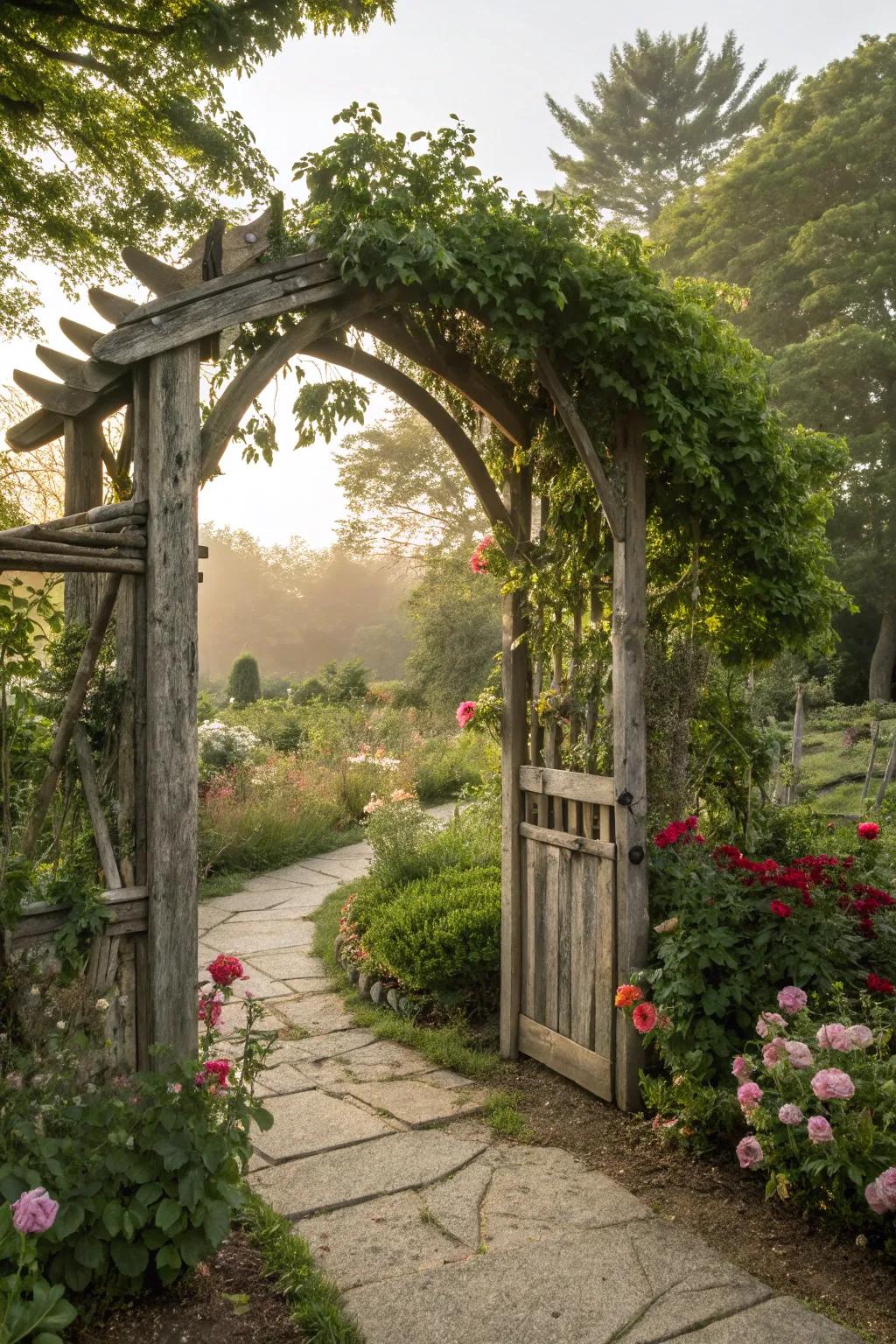
Enhance your garden’s natural beauty with wooden fences and arches. I built a simple wooden archway that frames my pathway perfectly.
Explore these options:
- Rustic Wooden Garden Arch: Transform your entryway with a rustic wooden arch, enhancing charm and elegance instantly.
- Wooden Fence Panels: Define your garden space beautifully with sturdy, decorative wooden fence panels.
- Climbing Plant Trellis: Support your climbing plants with a durable trellis, adding vertical interest effortlessly.
16. Maximalist Plant Variety

Go all out with a maximalist plant variety for vibrant landscapes. I love mixing colors and textures to create a lively garden scene.
These products might be useful:
- Assorted Flower Seed Packets: Create a colorful garden by planting these varied flower seeds for stunning visual impact.
- Garden Plant Variety Pack: Introduce rich textures with this diverse plant variety pack for a dynamic garden experience.
- Colorful Outdoor Plant Pots: Enhance your garden’s appeal with these vibrant pots for showcasing diverse plant arrangements.
17. Vertical Gardens for Space Saving

Create vertical gardens to maximize space. My vertical succulent wall is a conversation starter and saves room for other elements.
Products that could assist:
- Vertical Planter Wall Frame: Enhance your garden with a sleek vertical planter, ideal for small or large succulent displays.
- Indoor/Outdoor Succulent Wall Planter: Maximize your space with this versatile wall planter, perfect for indoor or outdoor use.
- Self-Watering Vertical Garden Planter: Simplify garden care with a self-watering planter, keeping your plants healthy with minimal effort.
18. Container Gardens for Flexibility

Use containers and planters for versatile gardening. I adore arranging pots of succulents and herbs that can be easily moved.
You might like:
- Decorative Resin Planters: Enhance your garden’s elegance with ornate resin planters, durable and lightweight for easy rearranging.
- Stackable Herb Planter Tower: Grow herbs efficiently with a stackable tower. Perfect for limited space and easy access.
- Portable Wooden Plant Caddy: Move large planters effortlessly with a sturdy wooden plant caddy on wheels.
